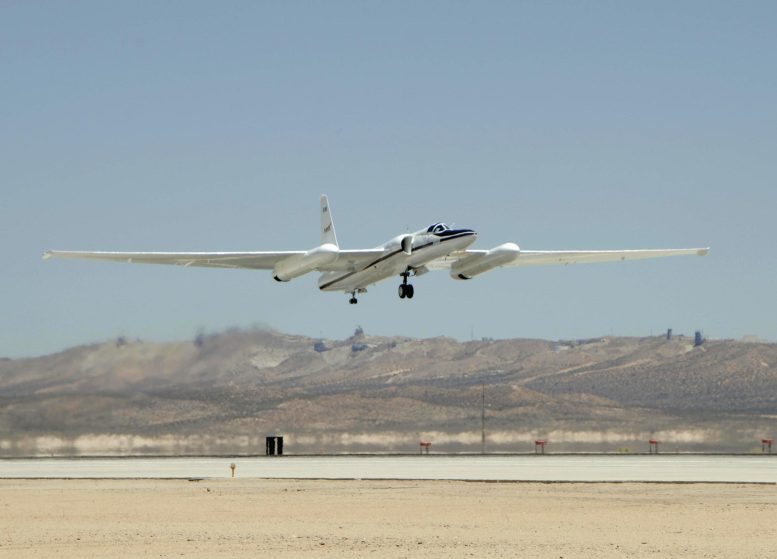
In July 2023, NASA’s ER-2 aircraft flew near thunderclouds to study the relationship between lightning and atmospheric energy fields. The aircraft, part of the ALOFT project, operates at a unique altitude, allowing scientists to collect detailed data on high-energy radiation emissions from thunderstorms. Credit: NASA
NASA’s ER-2 aircraft, as part of the ALOFT project, investigated lightning and related energy fields in the atmosphere in July 2023. This research aims to deepen our understanding of gamma-ray flashes in thunderclouds and will influence future space-based lightning mapping technologies.
Throughout July 2023, NASA’s ER-2 aircraft flew close to thunderclouds to investigate lightning and its connection to the vast energy fields in our atmosphere. As the highest-flying plane of NASA’s Airborne Science Program, the ER-2 is giving researchers a new angle on storm clouds.
Historically, lightning has only been researched by low-flying aircraft or ground observers too far from thunderclouds to examine their detailed characteristics. Satellites like NASA’s TRMM (Tropical Rainfall Measurement Mission) and NOAA’s GOES (Geostationary Environmental Satellite), as well as the Lightning Imaging Sensor on the International Space Station, have measured lightning and related energy discharges from hundreds to thousands of miles above. NASA’s ER-2 airplane, however, can fly at about 60,000 feet (20,000 meters), an ideal altitude and proximity to thunderclouds.
NASA’s Armstrong Flight Research Center in Edwards, California collaborated with the University of Bergen, Norway to create the ALOFT project, Airborne Lightning Observatory for Fly’s eye simulator and Terrestrial gamma-ray flashes. The team included scientists and investigators from the University of Bergen, Norway, and pilots, engineers, and technicians from NASA who investigated lightning glows and terrestrial gamma-ray flashes. Flying just above the height of thunderclouds over the Floridian and Caribbean coastlines, NASA’s ER-2 aircraft collect more accurate data that can advance the study of high-energy radiation emissions from thunderstorms. Credit: NASA’s Armstrong Flight Research Center
The ALOFT Project: A Deeper Dive into Lightning Research
Scientists participating in the ALOFT project — Airborne Lightning Observatory for Fly’s Eye Simulator and Terrestrial Gamma Rays — have been using the ER-2 to fly above Central America, the Caribbean, and the coast of Florida, which are hotspots for thunderstorm activity at this time of year. From just above the height of a thundercloud, the team expects to collect detailed data that can advance the study of high-energy radiation emissions from thunderstorms. The field campaign includes instruments and researchers from the University of Birkeland in Norway, NASA’s Marshall Space Flight Center and Goddard Space Flight Center, Sandia National Labs, and the U.S. Naval Research Laboratory.
“This is a mission to go into the microphysics of what is going on in the enormous electric field above our heads,” said principal investigator Nikolai Ostgaard from the University of Birkeland. “Our goal is to understand how and under what conditions TGFs, or terrestrial gamma-ray flashes, are produced. We also aim to understand the behavior of gamma-ray glows in thunderclouds.”
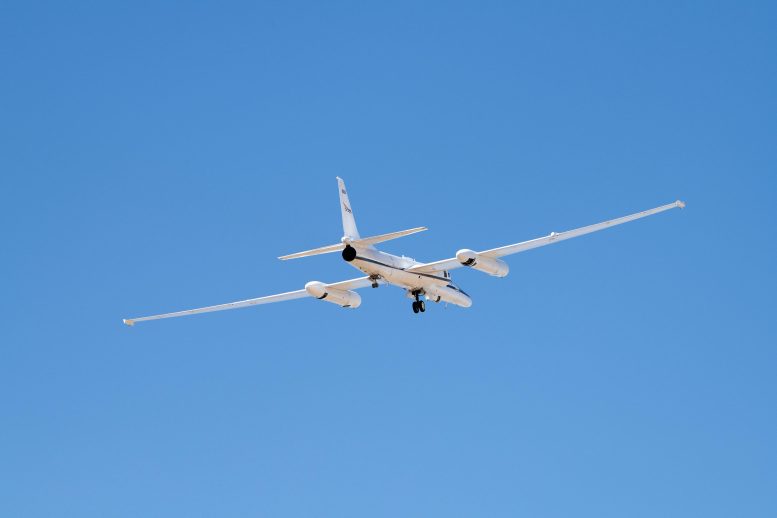
NASA operates two Lockheed ER-2 Earth Resources aircraft as flying laboratories in the Airborne Science Program under the Agency’s Science Mission Directorate. The aircraft are based at NASA’s Armstrong Flight Research Center in Palmdale, California, and collect information about the Earth’s resources, celestial observations, atmospheric chemistry and dynamics, and oceanic processes. The aircraft are also used for electronic sensor research and development, satellite calibration, and satellite data validation. Credit: NASA
Understanding the Science of Gamma Rays and Thunderclouds
The science underpinning these glows and flashes can be likened to a battery: a thundercloud is charged by the electric friction between humid air and cold air crystals, and that energy is discharged by lightning. Those discharges reduce the glow of extremely energetic photons — gamma rays — inside the thundercloud. Storm clouds can also produce gamma-ray flashes, which occur as brief bursts of light that last from tens to hundreds of a microsecond and are even more intense than gamma-ray glows.
“If you pass a thundercloud that is glowing in gamma rays, that means the electric field inside the cloud is very large,” said Ostgaard. The ALOFT science team is observing the gamma-ray activity of thunderclouds by examining this glow.
NASA pilots are flying the ER-2 as close to thunderclouds as safely possible to collect data with Instruments mounted on the aircraft. They measure the brightness of gamma rays (in photons per microsecond) by using scintillators – or crystals – that create a light pulse when hit by a gamma ray. A photomultiplier transforms these light pulses into electric pulses that indicate electrical charge. The ALOFT team on the ground receives this data in real-time, and if they detect that the aircraft is flying near an electrically glowing thundercloud, they instruct the pilot to circle and fly over that cell as long as possible.

The ER-2 is a versatile aircraft well-suited to perform multiple mission tasks. It operates at altitudes from 20,000 feet to 70,000 feet, which is above 99 percent of the Earth’s atmosphere. The aircraft has four large, pressurized experiment compartments and a high-capacity AC/DC electrical system, permitting it to carry a variety of payloads on a single mission. The modular design of the aircraft permits rapid installation or removal of payloads to meet changing mission requirements. Credit: NASA/Carla Thomas
Supplementary Instruments and Future Insights
In addition to the lightning instrumentation, NASA is providing additional measurements from precipitation and cloud radars and microwave radiometers. These additional instruments provide the ability to measure the structures and microphysical properties of storms, which can provide further insight into the mechanisms behind the electric fields.
“Our instruments are designed with a very high time resolution, so we can see a photon of a lightning flash every microsecond, or millionth of a second,” Ostgaard said.
Ostgaard is excited about what new insights this data will reveal about lightning and the electric field above us. “It will open doors to understanding lightning because we do not really understand how these gamma-ray flashes and glows are related to thunderclouds and lightning,” he said. The information gathered will also help scientists and engineers evaluate new design concepts for the next generation of space-based lightning mappers.

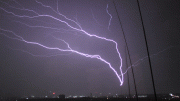
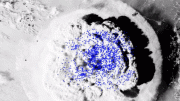

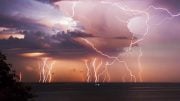
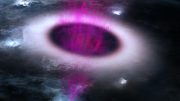

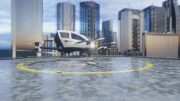

This is what a NASA press release should look like. It is informative, succinct, accurate, and lacking the unsupported assertions all too commonly associated with work in climatology.
One minor correction: “…, so we can see a photon of a lightning flash every microsecond, or millionth of a millisecond,”. That should be “millionth of a second,” or “thousandth of a millisecond.” The statement is attributed to the principle investigator, from Norway, for whom English is probably a second language. It is probably a translation error, but should have been caught by the NASA press release editor.
Thank you for the note. Article has been fixed.
Looks like a cargo version of the U-2. My dad would be proud.